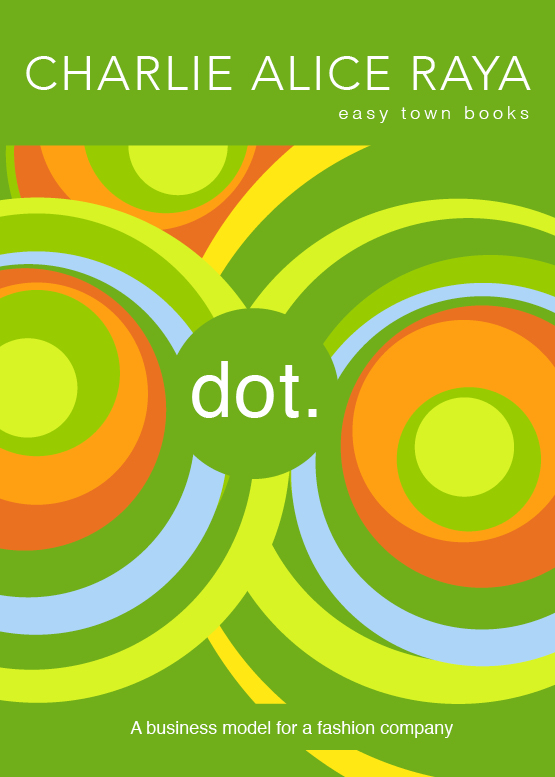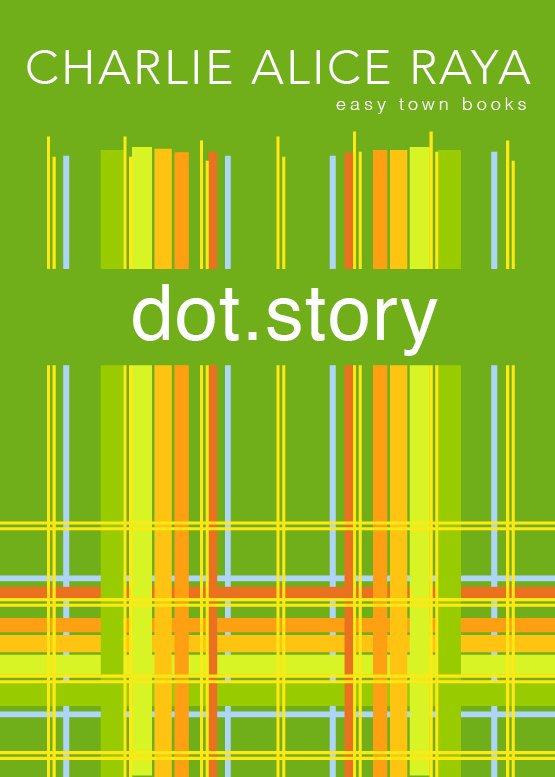The future of dot.
A chapter from the dot.book on how dot. could be set up
The future of dot.
I developed the initial ideas for dot. up to this point. And while I am happy to take the next steps with dot. and later be one of the guardians of dot. and will keep adding ideas, it will be for others to build and run dot.

Nothing is going to change if we keep believing that there’s nothing we can do. If you want to change something, you have to believe that change is possible, even against all odds. It’s absolutely impossible to change something if you don’t believe that it can be done. Things are not possible, because you believe they are. But they can only become possible if you do believe.
book 2/1, travelling, South Africa
What does it take for dot.?
In order to avoid investors, the initial budget for dot. can be generated by selling vouchers for the dot.online shop.
Selling 21 million vouchers for 48 euro each would provide an initial budget of more than a billion euro.
With that, a first network of dot.workshops, dot.suppliers and dot.stations can be set up around the world. And the initial dot.international team can build the dot.framework and the dot.website.
My hope is that a diverse group of people from around the world will come together for the initial dot.international team.
And while some teams build the dot.workshops and dot.stations, craftspeople and other professionals can travel to future dot.locations and train locals in all the tasks needed at a dot.workshop or at a dot.station.
However, it would probably be best to start with a small team which analyses the dot.ideas, finds the flaws and runs simulations to answer questions like: What’s the minimum size the network needs in order to work? Which locations are best suited for the initial network? Would it be better to start with dot.workshops only, or does it make sense to build some dot.stations early on as well? Would, for example, building one dot.station in each major region be useful as a reference points for all network members of that region?
Another big question is where to set up the dot.international headquarters. Or could the sum of the first dot.stations (maybe 12) constitute the headquarters thereby stressing from the start that dot. is truly international. And where would those first dot.stations be to ensure a broad representation of all major regions?
Though, I also like the approach illustrated in the dot.story, of having the headquarters in Tunisia if there is a chance of a dot.city in New Zealand. This would mean having dot.locations in different parts of the world to ensure a broad integration of major regions into the dot.network.
Keeping in mind that dot.stations are meant to strengthen communities, it might be good to choose lesser known cities.
But I would start the network in cities not in towns, I think.
Though maybe towns with a proximity to cities might be the most beneficial for a region, because that could make towns more attractive, which in turn would lessen the pressure on cities.
It will be tempting to set up a lot of dot.stations at once, but it’s probably better to stick with something like twelve initial dot.stations at the beginning, and primarily build the network with dot.workshops. dot.workshops moreover at locations where they can easily be extended or transformed into dot.stations later.
It will also be important to find out what the minimum size and the minimum requirements are so that a dot.workshop and a dot.station can be run smoothly.
A peek at a potential conversation between the members of the initial dot.team
Someone smart points out that there are regions without internet access, which will exclude these regions from the dot.network, and from everything dot. has to offer.
Someone else counters: ‘We can make it work. We already decided that dot.workshops have a showroom which includes some monitors for in-shop online shopping, and there could be some printed catalogues which can travel from village to village.
‘But,’ someone else chips in, ‘how will people who don’t even have internet access be able to afford buying from dot.?’
‘By getting the numbers right. The minimum order volume will probably have to differ from region to region to make affordable prices available.’
Someone else cuts in: ‘But then we get the same dilemma we already have. The cheaper items will be resold for a higher price in a more affluent area.’
‘Good point. We could try to counter that by supporting the creation of a local economy. That way no one needs to resell the dot.articles, because the locals will have other means to get an income. Or in other words, reselling is necessary if you have no other means of income. But grow a local economy, and you reduce the need to resell—‘
‘Nah. Reselling is easy money. You need something else to prevent it. Maybe establish the low price as a local treat. We support you by making sure you can buy these clothes.’
‘But then you get these silly bargain hunters.’
‘Maybe only locals get the low prices?’
‘That’s tricky. Maybe it could be solved this way: a) we calculate an optimal price and determine a price corridor to allow for some price bargaining. But it’s not big enough to make reselling or bargain tourism attractive. And we focus on building local income so that people eventually have the income to buy from dot.’
Someone shakes their head. ‘But how will they increase their income if the dot.workshop doesn’t get orders and can’t provide them with job opportunities?’
There is a moment of frowning silence. Then someone says: ‘Ripples.’
‘What?’
‘There are enough areas where rich and poor people live in the kind of proximity that can be used to create ripple effects. The dot.station would be in an area of a town which needs income. The rich next door use the dot.station for their orders, and income is generated. But not just around the dot.station. With an increase of revenue at a dot.station, part of that revenue can be used to send ripples further afield, strengthen local economies, which in turn send the ripples on. So the overall income will gradually increase and that will increase the number of people who can buy their clothes via dot.’
One of them nods and says: ‘And let’s not forget the local designers, local raw material providers, local raw material producers. In particular the designers should be able to increase their income quickly since they will sell their ideas globally.’
‘OK,’ someone else says: ‘So we set up our first dot.workshops and dot.stations in areas close enough to people with money. And we use part of that monetary impulse to send ripples into poorer areas which subsequently would experience an increase in income.’
‘There is more. dot. is a network that inspires, that makes people proud to be part of, that is worth being part of, because dot. puts humans and nature everywhere first. People are tired of exploitation, and with dot. they will be part of an idea which can transform their lives, and they can contribute to transforming other people’s lives.’
‘Besides, everyone who is part of the network will experience a sense of self-respect and independence that should result in a desire to protect the network rather than to undermine it with trickery.’
‘You have a point. But we will need to establish a good security network to make sure that fraud, sabotage and corruption are nearly impossible within the network, and that propaganda by rival companies and other players is easily counteracted.’
‘Alright,’ someone else says. ‘What do we need to make a start?’
‘Determine how many dot.stations are needed for the initial network. Twelve is a nice number, but let’s test this number in a simulation. Same with the number of initial dot.workshops.’
Someone shakes their head. ‘No. We’d better start with the designers. Open a simple website where any designer can apply to become part of the network. We will need work samples, something that tells us, yes, this person has something to offer. And we’ll need some indication that the designer agrees with the dot.principles, and we need an estimate by that designer what they regard as their main market or which kind of customers they mainly design for, if there is a clear focus.’
‘That’s good. Once we know who will make which kinds of offers, we’ll have a much better basis for deciding which locations are best for the initial network.’
‘The same goes for raw material suppliers and material producers. It’s the designers that will give us the indications of what we might need where.’
‘No. The locations of the workshops are relevant for the suppliers.’
‘That, too. But the designers tell us where their customers are, and that’s where the dot.workshops will be.’
‘OK. So our next step is to set up a website where anyone who is interested in becoming part of the dot.network can register. Suppliers included. That should give us a pretty good idea what might be possible where.’
‘Before we do, we need to put together a questionnaire for each group.’
‘True. Also, when we offer the vouchers for our initial budget, it will be interesting to see where we sell most of the vouchers. That should give us another good indication of which regions are best suited for the first dot.workshops.’
‘Let me summarise: we will build a simple website with questionnaires where anyone can register who is interested in becoming part of the dot.network.’
‘At worst so many people will register that we won’t be any the wiser …’
‘But we will be smiling.’
‘Broadly.’
‘Yes! And in that case it wouldn’t matter much where we set up the initial network. Which means we should go for locations that are relatively safe and stable, both politically and environmentally, and then gradually spread our wings.’
Someone chips in: ‘I’m worried about regions with little education.’
‘That’s no problem. We put together travelling teams who can teach skills, and others who offer additional education. It’s part of who we are, we share our knowledge.’
‘And we learn.’
‘True enough. We learn. And we respect regional knowledge, honour and support it. We won’t develop one way of doing things, and then go tell people how they have to work. Whenever we meet with someone who is interested in the network, we start by listening: what do they want to offer, what can the network learn from them, what would they like to learn from the network, and how would they like to run their dot.workshop, or dot.station, or their design studio, or their fabrics workshops, or their farms and so on.’
That statement gets a round of applause and someone adds: ‘It’s a point we need to be very clear about. There are dot.principles, a codex, and with respect to that we won’t budge an inch unless it’s time for a rethink of this or that principle. But there are no regional variations to our principles. Like, exploitation is a no go no matter what or where. Same with racism, sexism, inequality, insufficient sustainability and so on. But apart from the principles, members of the network create their workspaces and decide how and when to work.’
Someone nods. ‘We should add this to our principles: We learn from each other. We respect individual choices.’
Several others nod, but someone sighs. ‘I like it. But what if other players spy on us, and use the ideas of our designers for their mass productions?’
‘This is where we need the cooperation of the customers. And maybe we should add a campaign that encourages customers to stand up for their future by buying from dot.’
‘It’s true. We can’t do this without the power of the customers. Which also means that we need to be convincing and transparent.’
‘And that’s what we want, so we’re fine. Alright. Let’s get back to how we’ll proceed. We’ll need a team who evaluate all the applications. And I’d say a team for the dot.website would be good too, not the simple registration website, but the future dot.online presentation.’
Someone nods. ‘I suggest that the simple registration website shouldn’t be quite that simple but rather the basis for the dot.database for all network members. That means we will have two programming teams from the start. I’d also suggest a team which work on the details for the dot.workshops and for the dot.stations., and teams for the core players: designer, raw material, material producers, plus a team who coordinate and evaluate the input of all, and the exchanges between these groups.’
‘I wonder whether we should finance some seven hundred seventy seven designers plus their local suppliers to create some twelve items each. That would get us over nine thousand items from the start so that by the time the website launches, we already have a wide range to offer.’
‘That means we have to publish a list of all the categories we want to offer and allocate a number of items to each category. Then a designer can pick the categories they want to contribute to.’
‘That’s workable.’
‘And once the revenues are in, this initial development budget can be repaid, and we can use it to support the next group of designers, and so on.’
‘Ripples again. I like it.’
‘Me too. But we should go about this slowly. We don’t want to cripple or frustrate our creative core — or anyone for that matter — by asking for repayments too early.’
‘True. You know, by the time the website launches, we need to have enough dot.workshops to meet the demand.’
‘You’re right. That’s a bit of a gamble.’
‘Unless we involve the customers in the dot. building process.’
‘How?’
‘Well, the locations where we’ll sell most of our vouchers seem a pretty safe bet. On top of that, we could ask the customers the following questions: What kind of clothes do you need? And: Would you commit to spending at least — say two hundred and twenty two euro within the first three years after the launch of dot.? And: What would you most likely spend it on?’ The results from this survey would give us another good indication where to set up the first dot.workshops. It’s still risky, since a commitment is not a guarantee, but it’s better than flying blind. And we should invest in a simulation programme so that we can play around with the numbers to get an indication of how to distribute the dot.stations, which size they should/could have, what costs they might incur, and how much they will have to earn and so on. I guess, there are regions where a single dot.station will be all that can be run feasibly for miles on end, which also means this dot.station might want to invest in a slim railway line or in electric vans.’
‘Oh, yes. And let’s add some fun party trains too, for the fun but also for some extra revenue.’
Several people chuckle, and one of them says: ‘Anyway, other areas might need several dot.stations and more dot.workshops to meet the demand, and together they could set up stables for cart horses and places for cargo bicycles.’
‘That’s good. And we can keep feeding the simulation with all the data and experiences we make, to see how new developments affect a region and the whole network.’
‘Yes, the simulation might even indicate where to add or remove a workshop or station.’
‘Alright. So we agree to work parallel on all parts of the future dot.network, and we will include the public to make sure we have the support we need, and we actually deliver what the public needs.’
Some days later
Some days later, the following list is circulated among the members of the initial dot.team.
dot.’s first steps
Step 1
Set up a team which coordinates all steps that are necessary to set up dot.
Step 2
Set up four programming teams.
The network database (including the applications for potential network members, matching network members, profiles for network members, automated workflows, connection to admin system, dot.website and simulation; simple version first)
The admin system for all admin, coordination, and transactional tasks (plus connection to the dot.database)
The dot.website for customers (with connection to the dot.system for financial transactions, and to the dot.database to connect customers with dot.workshops)
The simulation programme (for preliminary simulations, and later as a tool for monitoring of developments, and as a tool for the decision process with regard to extending the dot.network.)
Step 3
Set up and open a website which introduces dot. and offers vouchers for €48 each to generate an initial budget for the dot.network. A single person can buy as many vouchers as they like.
This website also offers a questionnaire for prospective customers where they can state their location, what kind of clothes they would be interested in, and how much they might spend over the next three years.
Step 4
Set up teams for all questions concerning raw materials, materials, designers, dot.workshops, dot.stations, customer feedback, applications, dot.research and dot.international.
The teams for dot.workshops and dot.stations will include: craftspeople, architects, landscape architects, ecology experts, machine builders and the like.
All teams for dot.international will be extended gradually.
Step 5
Set up and open the network database for applications.
Step 6
Use a simple simulation plus customer feedback to determine the locations and the sizes of the initial dot.stations, dot.workshops and dot.suppliers.
Step 7
Choose 777 designers (representing the global community) to design 12 items each for the launch of the dot.website.
This step also serves to fine-tune the cooperation between dot.international, dot.designers, dot.suppliers, dot.research and dot.security.
Step 8
Build the initial (12?) dot.stations. These first dot.stations will also help to fine-tune the requirements for dot.workshops.
Step 9
While the dot.stations and the dot.website are built, teams will travel to potential locations for future dot.stations, dot.workshops and dot.suppliers, and discuss the requirements with the locals, plus offer training.
Step 10
Build the initial network of dot.workshops.
Step 11
Add all designer items to the dot.website. Test the dot.website. Test all dot.workflows.
Step 12
Launch dot. with fashion shows at dot.workshops and festivals at dot.stations, plus circulate extensive material on why dot. is the best there is.
Get in touch
If you would like to join the initial dot.team or a later dot.team, or if you would like to support the project, please, get in touch.

dot. is not a style. It’s a statement.
A statement for the dignity and uniqueness of every human being,
and for the future of our planet.
dot.book


dot.book & dot.story
Double Pack

‘dot. could become a melting pot for any fashion designer who is fed up with exploitation, and who’d like to try a new business model.’
book 1, beginning
Pages: 128k, 511 pages
Files: dot.book, ePub, dot.story, ePub, dot.tour, pdf, book stations tour, pdf
Format: ePub
Price: €17.12 (incl. VAT)

